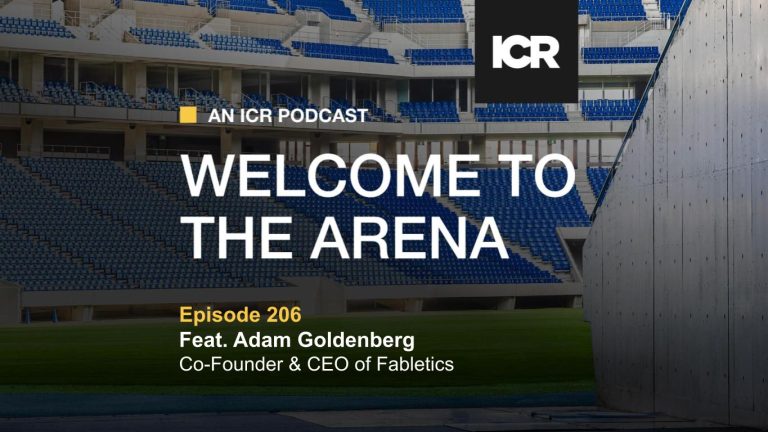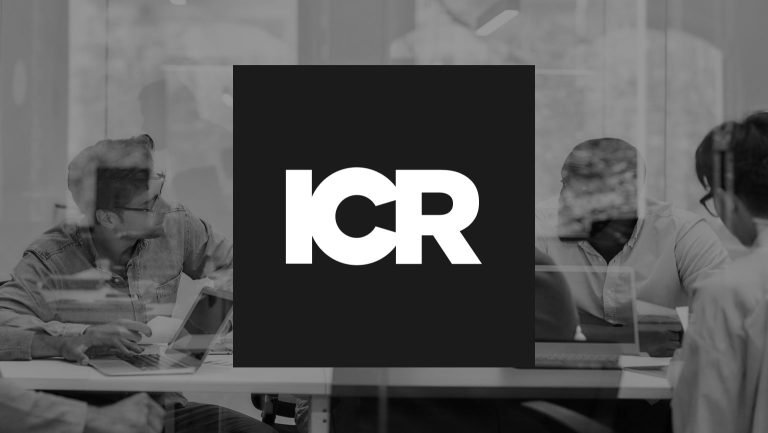Jefferies’ Global Healthcare conference in London, now in its 14th year, is increasingly able to compete with the better-known J.P. Morgan (JPM) Healthcare conference in San Francisco in January as one of the pre-eminent global healthcare industry investor and business development meetings.
The major conference week spearheaded and primarily hosted by Jefferies in London, and historically described as the “JPM of Europe,” has grown year on year. This year an estimated 4,500 people attended from nearly 1,000 global organizations, attracting numerous US companies; an extra day was added purely focused on biotech and biopharma companies, and the conference spilled outside the confines of the Waldorf Hotel into an expanded venue to accommodate these visitors.
An ecosystem of satellite events has grown up around Jefferies, with numerous smaller conferences and a dizzying array of evening networking events. This wider phenomenon has turned London into a must-attend destination for people in the global healthcare sector for November (and no doubt frustrating tourists who may have hoped for a quiet off-season visit to London).
Jefferies coincided with ICR Healthcare’s own healthcare conference, itself in its 13th year, a half-day curtain-raiser at the start of the week. Our global team assembled three discussion panels and a fireside chat with leaders of global healthcare companies, concluding with networking. The theme was “Brave,” foregrounding the qualities healthcare company leaders need amid volatile environments.
The combination of these two marquee events gives us a rare vantage point to understand not just what’s happening in the market, but critically, how successful companies are talking about what’s happening. We’ve distilled six key lessons from both events that healthcare companies of all sizes and stages – from emerging innovators to established market leaders – can apply directly to JPM preparation, covering messaging, narrative clarity, and investor engagement to carry momentum from London into San Francisco.
Key Takeaway #1: Narrative Clarity Wins in a Crowded Field
With hundreds of companies competing for investor attention, good data and regulatory pathways no longer guarantee standout success. The healthcare sector is increasingly heterogeneous and fashion-driven. The key lesson from both Jefferies and the ICR Healthcare Conference? Clear, memorable narratives outperform complex stories.
As Alethia Young, Chief Financial Officer of Bicycle Therapeutics put it at the ICR Healthcare conference: “If my mom can’t understand the story, we have a problem.” Companies are overcomplicating pitches and burying differentiation in jargon. Winners deliver crisp, compelling narratives that non-specialists grasp immediately – especially critical outside “hot” spaces.
JPM Application: Before you head to San Francisco, test your story on people outside your industry. Can they explain your value prop in one sentence? If not, refine it. At JPM, where attention spans are fractured and meeting time is precious, clarity and a clear elevator pitch is your competitive advantage. This applies whether you’re a private biotech company seeking Series funding or an established public company repositioning for new market opportunities.
Key Takeaway #2: The Profitability Narrative Has Shifted
The most striking shift across both conferences: investors no longer want “growth at all costs” but seek companies balancing growth with a clear path to profitability. James Lee, Senior Managing Director of ECM for Guggenheim Securities, speaking on the finance panel at the ICR Healthcare conference said the IPO pipeline “hasn’t been this good for a while” – though the bar for readiness has risen. Companies entering 2026 must articulate both growth potential and financial discipline.
While optimism remains guarded after several false dawns, this shift is real: companies credibly positioning both growth and profitability are gaining institutional traction.
JPM Application: Whether you’re early-stage or an established player seeking capital, don’t shy away from discussing profitability timelines—frame it honestly as a roadmap, not a promise. Investors respect transparency over moonshot narratives. Demonstrate the leadership team has thought rigorously about unit economics and scalability, not just market size. For larger organizations, this might mean articulating returns on specific R&D investments or new therapeutic areas. For earlier stage companies, it’s demonstrating a clear path to unit-level profitability.
Key Takeaway #3: China Strategy Is Now Table Stakes
Perhaps the most significant market shift is emerging from both conferences: China has become the world’s second most important place to develop medicine and is leapfrogging Europe at breakneck speed due to its growing appeal as a destination for clinical trials and innovation.
Andrea Ponti, Founder and Managing Partner of GHO Capital, Europe’s largest healthcare specialist private equity firms, summed it up: “China is a game-changer. Ten years ago, people thought of it as just a low-cost manufacturing destination. Today the innovation coming from there is phenomenal.” What was striking wasn’t just the acknowledgement, it was the urgency. Healthcare companies—regardless of size—made clear they understand an urgent need to either develop competitive innovation or credibly articulate their China engagement strategy.
JPM Application: If your company has an international scope, be prepared to articulate your China strategy – or your reasons for not having one. Have a clear answer to the questions: Are you developing in China? Licensing? Partnering? Monitoring? Staying out? For multinational organizations, this might involve regional regulatory approaches. For smaller companies, it could mean discussing partnership pathways. Companies without a China narrative are leaving money on the table!
Key Takeaway #4: Regulatory Uncertainty Demands Transparency
The FDA remains in a state of flux and highly unpredictable following leadership transitions and policy shifts. The agency has signaled a willingness to take risks and support areas of healthcare such as rare diseases, but amid major leadership turnover it is led by a relatively experienced team. The implications of the Trump administration’s pricing strategy for pharma are still being digested.
JPM Application: Don’t bury regulatory risk or pretend it doesn’t exist. Instead, frame your regulatory strategy transparently: “Here’s the pathway we expect. Here are the key decision points. Here’s our contingency.” Investors respect teams that have mapped complexity rather than glossed over it. This builds credibility and differentiates you from competitors who sound naive about headwinds. Public companies should address how regulatory shifts impact near-term guidance and long-term pipelines. Private companies should demonstrate that management understands the regulatory landscape and has contingencies built into timelines.
Key Takeaway #5: The Deal Cycle is Longer – Patience and Persistence Win
One theme emerged consistently across both conferences: successful deals are taking longer to close, and the courtship period is more deliberate. Deals are taking longer and require more deliberate relationship-building than they did in the past. Whether pursuing financing, partnerships, or M&A, companies need to put in hard work and “shoe leather,” treating Jefferies (or JPM) not as a closing event, but as the start of each new investor engagement and long-term partnerships.
JPM Application: Don’t expect to walk away from JPM with a term sheet. Instead, focus on securing follow-up meetings, clarifying investor interests, and demonstrating consistency in your messaging. Track which investors asked substantive questions about your business and nurture these post-conference. Success at JPM is measured not by deals closed, but by quality conversations started. For large cap companies, this might mean deepening relationships with existing shareholders or introducing new strategic investors. For emerging companies, it’s establishing credibility with new investor audiences.
Key Takeaway #6: Preparation is Non-negotiable
Finally, and perhaps most obvious: the companies that gained traction at Jefferies – and that will gain traction at JPM – were the ones that showed up prepared. Not just with polished decks, but with discipline about their messaging, their target investor list, and their follow-up strategy.
Preparation is key. Your pitch deck must be crisp, but you also need to be able to deliver an impromptu 30-second pitch while fighting over a taxicab. Map your goals and target meetings beforehand – serendipitous encounters are rare at JPM, and all meetings are short.
Effective preparation means: 1) Identifying 15-20 priority investors and understanding their portfolios; 2) Tailoring messaging to each investor segment; 3) Aligning team talking points; and 4) Planning for real-time adaptation when new questions arise.
JPM Application: If you haven’t already started your JPM prep, now is the time. Map your target investor list. Pressure-test your narrative with trusted advisors. Coordinate with your team so messaging is consistent across all touchpoints. These foundational elements separate winners from also-rans at major conferences. The scope may differ – larger organizations may be managing relationships across multiple investor segments simultaneously, while smaller companies might focus on a concentrated group – but the discipline is non-negotiable at this stage. Use the remaining weeks before the conference to refine, not to start from scratch.
The Strategic Imperative: Partnering for Deeper Impact
The six lessons above aren’t just observations—they’re a roadmap for how healthcare companies achieve meaningful returns from JPM participation. We’ve helped healthcare companies of all sizes and stages across global markets unlock deeper value from JPM by mastering these exact preparation steps.
Here’s what strategic JPM participation looks like in practice: narrative clarity stress-tested against real market feedback; coordinated investor engagement with consistent messaging across all touchpoints; cohesive storytelling delivered through press releases, media engagement, social presence, and on-site execution; and follow-through that extends JPM momentum into subsequent fundraising or partnership conversations.
The companies that realize the greatest benefit treat JPM as a cornerstone moment in their investor relations strategy—not as a standalone event. If you’re thinking strategically about how to maximize your JPM 2026 participation, let’s talk about bringing these preparation disciplines to life for your organization.
Contact Jessica Hodgson, Partner, or Kris Lam, Associate Partner, to discuss your JPM 2026 strategy.



